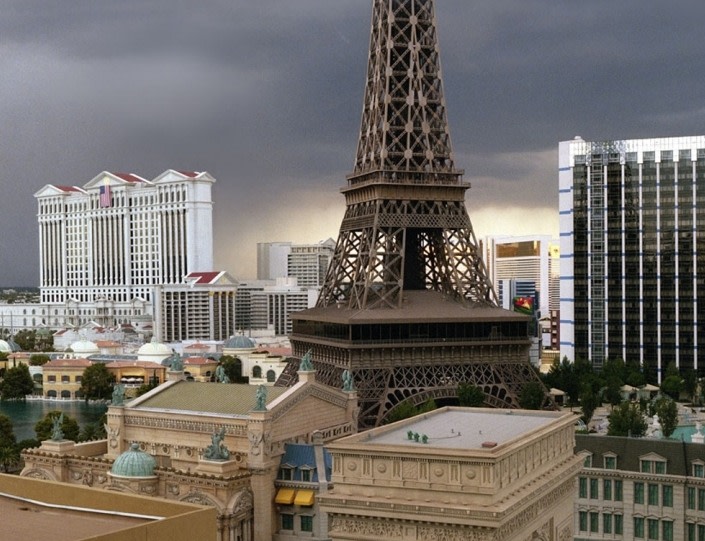
Allan deSouza's second show at Talwar continues a kind of work begun in his first: photographs of tabletop studio models of cities and landscapes. The earlier examples were in part a response to Sept. 11, with the New York City skyline rendered as a broken wall of rough, vertical found wood scraps. The new pictures, titled ''Everything West of Here Is Indian Country,'' move backward in time to an earlier America in full control of its urban self-image.
One such image was the so-called White City erected for the World's Columbian Exposition in Chicago in 1893. The event itself intended to advertise the United States as the new world power; the White City, a kind of gigantic fairground stage set, was a vision of a metropolis of the future, but one built in a neo-classical style that spoke of old-world authority. Mr. deSouza's photographed version, however, is conceived along humbler lines. Its architecture is composed primarily of disposable food and beverage containers, with a few customized structures added, including a Citicorp building and two Bruegelian towers of Babel.
Another picture offers a surreal view of an already surreal Las Vegas. A third, titled ''Shadows Cross Madinat-al-Salam,'' moves to a different part of the world with a reconstruction, again from throwaway material, of the mythical, long-vanished city on which Baghdad now stands. The show concludes with photographs of a desertlike landscape and a storm seascape, both made from melted wax.
Taken together, these evocations of nature and culture bring to mind Thomas Cole's series of paintings titled ''Course of Empire'' (1836), now in the collection of the New-York Historical Society. Cole depicted civilization as a city of preposterous, prideful artifice that sinks back into the primal ooze from which it arose. His epic, moralizing work, and Mr. deSouza's witty photographs are entirely different in tone, but both have similar, less-than-sanguine pertinence to the course of empire-building today.
-Holland Cotter